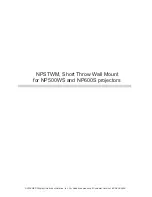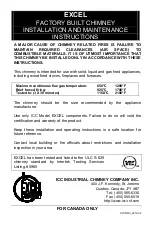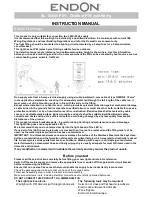
WWW.BALTIMOREAIRCOIL.COM
21
Corrosion Protection
Chemical Treatment
Requirements
Passivation
Biological Control
Long Term Care of Stainless
Steel
BAC’s Manufacturing Process
Recommended Cleaning
Procedure
• Bleed/blowdown or chemical treatment used for corrosion and scale control alone is
not adequate for control of biological contamination.
• Introduce solid or granular biocides through a chemical “pot” feeder installed in
parallel with the system circulating pump. Diluted liquid biocides may be added
directly to the cold water basin.
Long Term Care of Stainless Steel
When the percentage of chromium in steel exceeds 10.5%, it is called stainless steel. The
chromium in the steel reacts with the oxygen in the air to form a chromium-oxide surface
layer, also called the passivation layer that provides the corrosion resistance in stainless
steel.
BAC’s Manufacturing Process
BAC takes precautions to prevent cross-contamination, processing galvanized and stainless
steel parts separately. Also, stainless steel brushes are used to clean welds on stainless
parts and care is taken to avoid scratching parts during processing. Organic cleaners are
used to clean the finished product prior to shipping.
Jobsite Considerations
While stainless steel itself does not rust so long as the chromium-oxide surface layer is
intact, it is not immune to contamination from its surroundings. Some common sources of
surface contamination are:
• Dirt and soil
• Shop oil or grease that may carry other contaminants such as metal chips
• Machining or welding galvanized steel at the jobsite may cause debris to impinge itself
into the stainless steel
These contaminants can deposit on the surface and scratch the passivation layer or
prevent it from re-forming. They can also get trapped underneath the passivation layer and
reduce corrosion resistance.
Recommended Cleaning Procedure
Stainless steel needs to be cleaned regularly to maintain the corrosion resistance as well
as to maintain the overall aesthetics of the stainless steel.
It is fairly simple to clean most contaminants off the surface of stainless steel. Most dirt
and soil can be cleaned with a clean cloth, warm water, and mild detergent. For persistent
dirt, a little vinegar can be added in the cleaning water. It is important to always rinse
the surface with warm water and wipe with a dry cloth after any cleaning, whether mild or
aggressive.
• Fingerprints, mild stains or grease spots can be cleaned using organic solvents such
as acetone, methyl or ethyl alcohol, or mineral spirits. Stainless steel wipes or glass
cleaners commonly available in stores may also be used.
NOTICE:
Never use chloride or
chlorine based solvents such as
bleach or muriatic (hydrochloric)
acid to clean stainless steel. It is
important to rinse the surface with
warm water and wipe with a dry
cloth after cleaning.














































